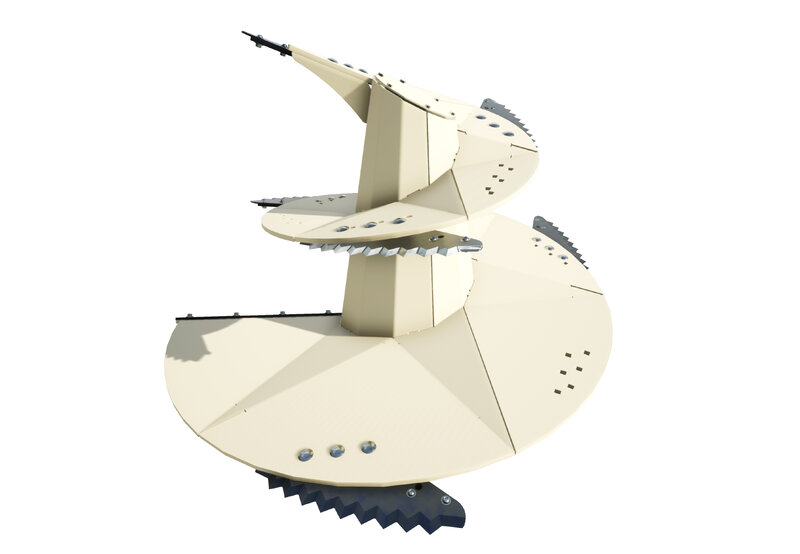Kun ohjaamo on suljettu, hitsausrobotti aloittaa syklin, joka kestää 65 minuuttia (verrattuna 120 minuuttiin käsinhitsauksessa). Tämän robottisolun tarkoituksena on yhdistää teräväkärkiset elementit, mukaan lukien metallispiraali ontolla kartiomaisella akselilla. Lopulta tämä noin 400 kg painava ruuvi tulee olemaan yksi Lucas G -koneiden sydämeen asennetuista elementeistä.
Polttimen reitit ovat monimutkaisia, koska ne suoritetaan vuorotellen kartiomaisen ruuvin pinnalla ja alapuolella, ja niissä on jatkuva muutaman millimetrin poikittainen pyyhkäisy hitsauksen etenemisen suhteen kohtisuorassa. Kuuden robottiakselin lisäksi numeerinen ohjaus hallitsee jatkuvasti kolmea lisäakselia, yhtä lineaarista ja kahta pyörivää, yhteensä yhdeksää akselia.






